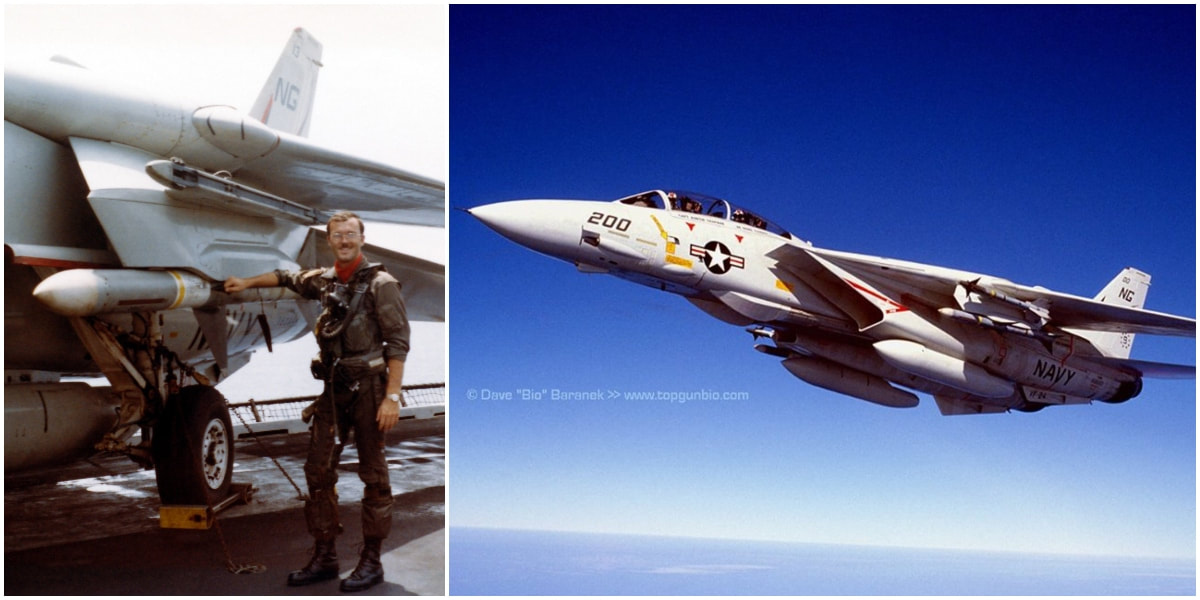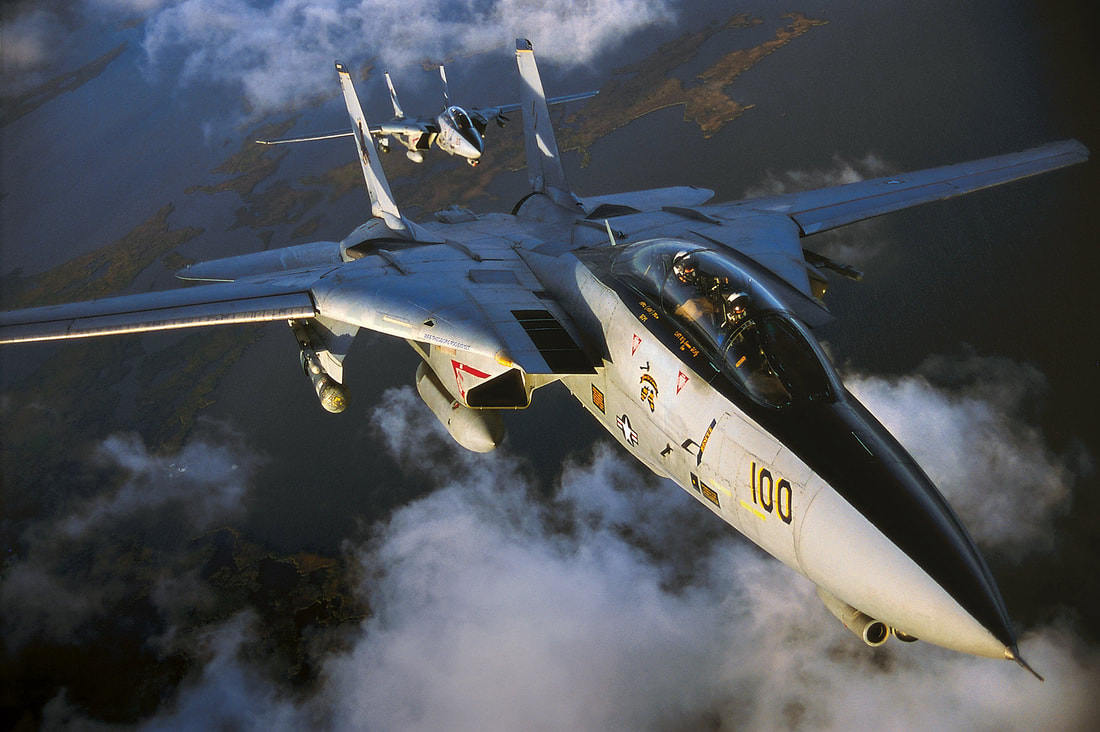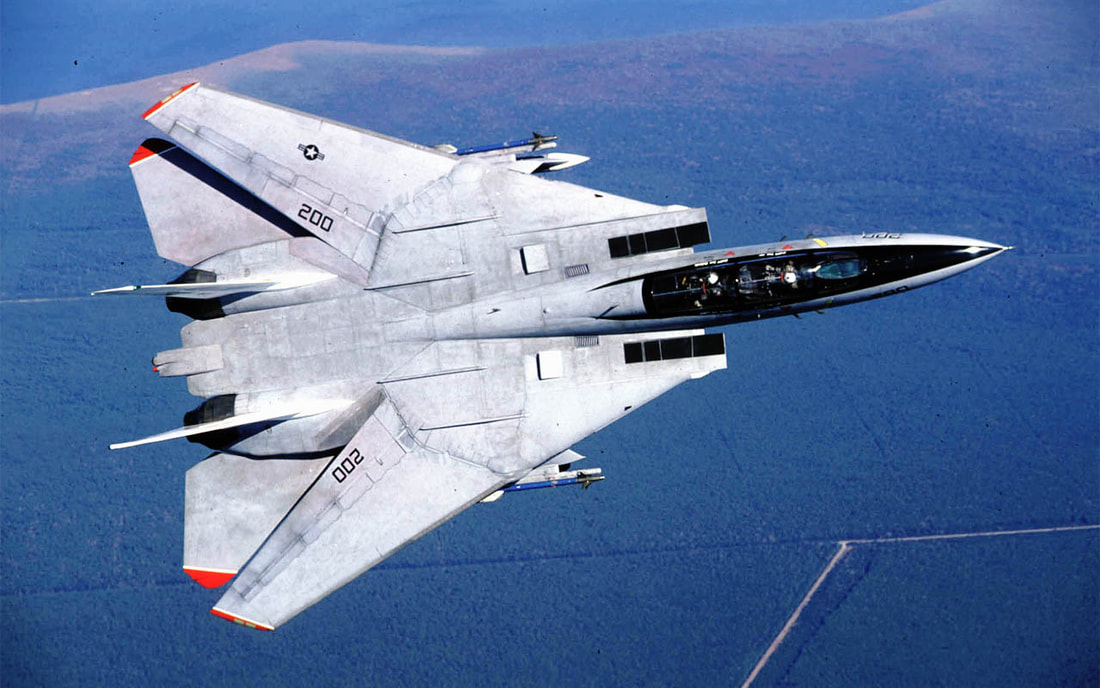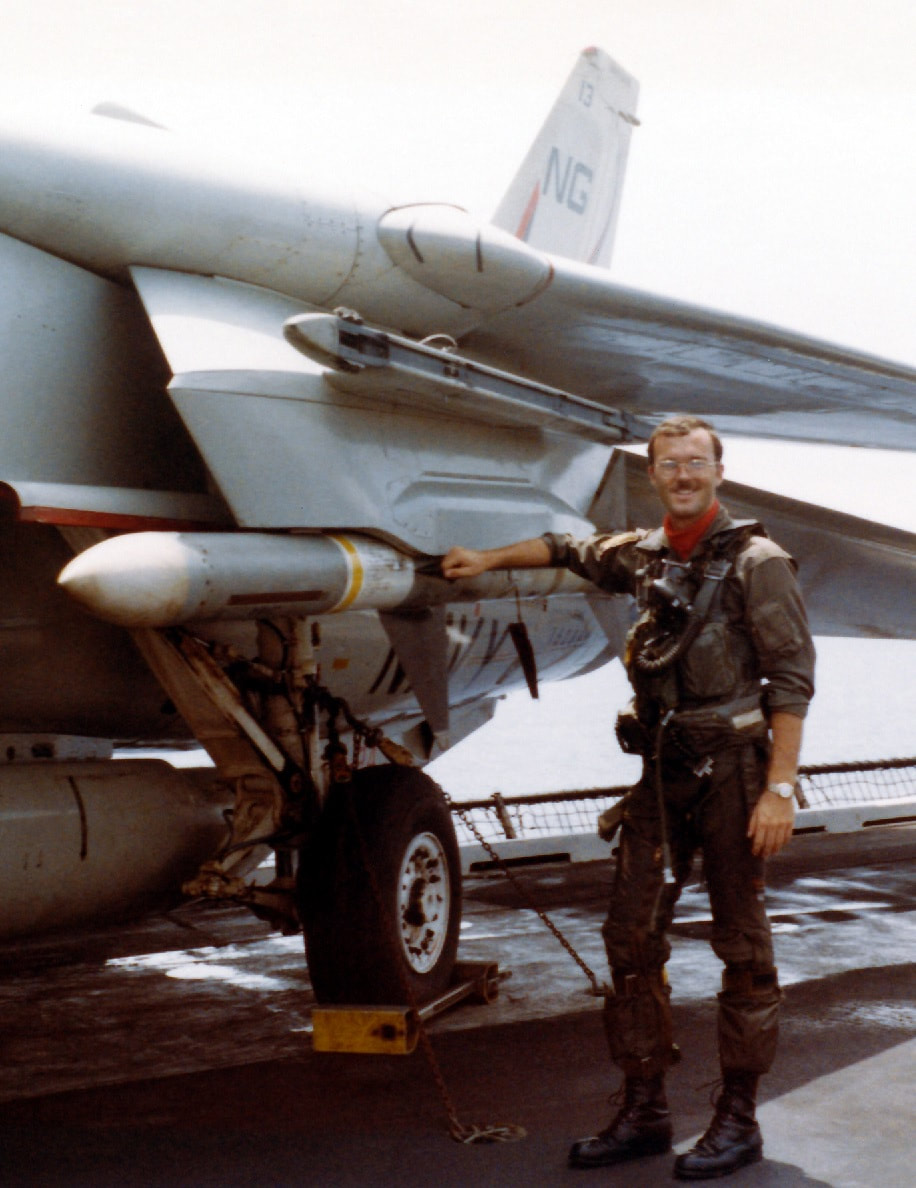|
Dave “Bio” Baranek enjoyed a successful and satisfying 20-year career in the Navy, starting with assignments to F-14 squadrons as Tomcat Radar Intercept Office (RIO) and the elite TOPGUN training program, and later assignment to the Joint Chiefs of Staff and the US 7th Fleet. At one point, he commanded an F-14 Tomcat fighter squadron, responsible for nearly 300 people and 14 aircraft worth about $700 million. He completed his career with 2,499.7 F-14 Tomcat flight hours and 688 carrier landings. The Grumman F-14A Tomcat was the first of the American teen-series fighters, which were designed incorporating air combat experience against MiG fighters during the Vietnam War. However despite the fact that the F-14 was a formidable dogfighter, what made the Tomcat unique was fleet air defense role. To accomplish this mission the aircraft was fitted with a powerful weapons system known as the AWG-9 which was able to support the AIM-54 Phoenix that provided an unprecedented one-hundred mile range and included a small onboard radar to guide itself to the target during the final phase of flight. Because of the AWG-9’s impressive capabilities a RIO in the back seat of the F-14 was required to optimize it in various stages of a mission. Of all the training environments faced by a Tomcat crew, possibly the most challenging one for a RIO was that of a so called MISSILEX (a Missile Exercise, where a “live” missile is launched against a drone acting like an airborne target). In his book Before Topgun Days Baranek tells the story of the second AIM-7 Sparrow he ever shot: in Dec. 1982, while attached to the VF-24 Fighting Renegades Fleet squadron, he and Lieutenant Commander Steve “Drifty” Smith were in fact chosen to launch a Sparrow at a target over the Pacific Ocean off Southern California. Since the missile shot had to follow a test and evaluation (T&E) profile, both drone and Tomcat were required to fly supersonic, an aspect that added more challenges to the already complex drill scenario. As they approached the launch range, Drifty shoved the throttles to Zone 5 (maximum afterburner for F-14A) and they accelerated through Mach 1, then an AQM-37 target drone was launched by an A-6 Intruder operated by the Pacific Missile Test Center. Let’s join Bio again in the Tomcat cockpit to live with him the tense moments he experienced during the MISSILEX: “Our range to the target was thirty miles. That may sound like a long distance, but we were supersonic and so was the drone. Add the two speeds, and you find that the range was shrinking by more than two thousand feet each second. […] One minute after the start [of the intercept], we were at the right range and angle to launch the Sparrow. I pushed the red ‘missile launch’ button. The 500-pound weapon jumped off the jet with a strong thump – that was the small explosive charges that made sure it cleared the plane – and rocketed out ahead of us. […] I sweated the radar picture. I had two small green lights indicating the radar was still locked on the drone. But the track was near the edge of my scope. If it went off the scope, that meant the radar antenna could not turn enough to follow target. Our radar would break lock, the AIM-7 would go ‘stupid,’ and I would have to try to find that little drone again. That was hard enough when fighter and target were going 300 knots or less; at over 600 knots… I didn’t want to think about it. Halfway through the turn my “radar lock” lights went out. I had messed up the intercept! ‘Broke lock,’ I growled to Drifty. ‘Going to search.’ I didn’t have to include the dammit! that I was thinking. ‘Bio, relax,’ Drifty drawled. ‘It was a direct hit. We broke lock because the target is gone. We just blew it out of the sky.’”
0 Comments
Leave a Reply. |
Send us an email at [email protected] if you want to support this site buying the original Division of Aero Patch, only available through this website!
All
|





 RSS Feed
RSS Feed